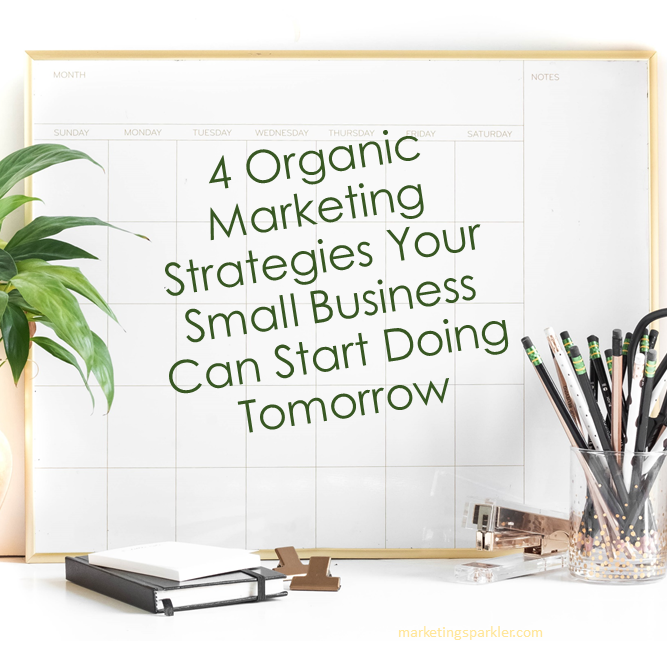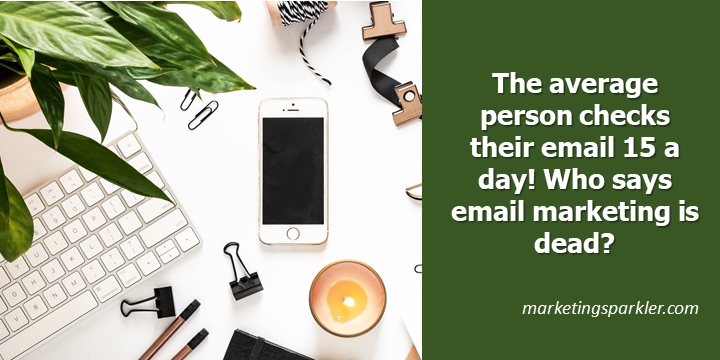When you first opened your gluten-free bakery or novelty-only bookstore, your first objective probably wasn’t to rank high on Google searches—and we don’t blame you.
Most small businesses spend 1% of their sales on marketing, which makes a lot of sense. Getting stocked up on flour or building up your book collection comes before the flyers or grand opening.
The only problem? Your new Saturday morning coffee shop regular won’t become your Saturday morning regular until they hear of your business first.
Get Visibility For Your Business, First
Traditionally, there are two ways to get your name out there:
- Organic marketing (sometimes called inbound marketing), and
- Paid marketing, or pay-per-click (PPC).
The two work best in tandem, but they accomplish very different goals—and one costs a whole lot more than the other.

What’s the Difference Between Organic Marketing and Paid Marketing?
Organic marketing is all about the slow burn; building up clients, establishing a brand, and connecting with customers through online interactions.
Paid marketing is more about targeting customers to get quick results.
For example, going to a restaurant that your friend recommended is an example of organic marketing. It’s a natural way of gaining clients. The people come to you.
Paid marketing is a little different. Have you ever browsed a pair of shoes on the internet once and then suddenly they show up on every site you surf for the next month? That’s one example of paid advertising—retargeted ads.
PPC or pay-per-click advertising allows you to pay to make your website or article one of the first search results when people google a keyword related to your company or product.
Paid marketing is a proactive, more aggressive approach, and it chases customers. Instead of hoping someone will find your product page, PPC directly targets audiences.

Which Costs More Dough?
Paid marketing costs more money upfront, meanwhile organic marketing costs significantly less.
The difference is in the results: Paid marketing ramps up traffic in a short amount of time, while organic marketing brings in a steady stream.
If you’re a new business eager to get your name out there, it makes sense to spend money upfront so people hear about your business. The only catch? Paid marketing doesn’t sustain itself. It only pays off as long as customers come pouring in.
And that’s where organic marketing comes in.
[Tweet “Paid marketing ramps up traffic in a short amount of time, while organic marketing brings in a steady stream.”]
Which is better: Organic Marketing or Paid Marketing?
Both—when used together. Paid marketing helps get your name out there in the early stages and can boost your site’s traffic fast. Organic marketing is designed to build up a lasting clientele.
Organic marketing requires a bit more creativity than paid marketing. With PPC, for instance, you could spend a lot of money and get a nice little traffic surge on your site. But with organic, you have to build some of the foundation yourself—which is why we’ve laid the groundwork for you.
[Tweet “Paid marketing helps get your name out there in the early stages and can boost your site traffic fast. Organic marketing is designed to build up a lasting clientele.”]
4 Organic Marketing Strategies You Didn’t Know You Needed
Here are four organic marketing strategies your small business can start doing tomorrow:
- Build a blog
- Send those emails
- Get on the gram
- Get to know your customers
As always, don’t expect results right away. Be patient. Organic marketing can be frustrating—especially if you go in expecting results by tomorrow.
Let’s dive in.

1. Create Relevant Content
One of the ways future customers can find your business is through blogs. Creating original content adds more authority to your site, which search engines eat up.
If you’re tech startup selling a similar product as roughly ten other companies, building up a blog will help your site float to the top of Google searches. (And most consumers tend to click the top search results anyway.)
To build your content, you’ll want to staff some writers. If hiring a new full-time, in-house position is too much, find a freelance writer—you’ll pay them less than you would an in-house writer, and they can write for you ad hoc.
As a general rule, always make sure you’re platform conscious. Don’t write a novel that will take someone reading on mobile ten minutes to finish.
2. Get into Email Marketing
Email marketing. It’s a thing. Everybody’s doing it. (And for good reason.)
Email marketing is a great organic marketing strategy because it’s effective and it’s cheap. The average person checks their email 15 times a day, so shooting out reminder emails that your product is awesome is a great way of catching their attention.
It’s also a fantastic way to communicate with customers without picking up the phone and getting put in the “annoying ex” category.
Whether you’re blasting out announcements, seasonal discounts, or promotions, always follow email marketing best practices. For instance, always make sure you use email templates that are mobile-friendly.
Organize and automate your emails. It’s a lot easier than it sounds, and tools like Mailchimp can do it for as little as $10 a month (pssst: Some plans are even free).

3. Become Best Friends with Social Media
Spread your business by creating a brand users can recognize. Choose a platform that best highlights your company. If you run a small photography biz, hit up Instagram. If you created a nonprofit to spread the word on underrepresented minorities, use Twitter.
Social media provides free, cost-effective ways to solidify your brand’s personality.
There are lots of social media tips and tricks, but for most companies, especially those with physical locations, it all really boils down to using these three platforms: Facebook, Instagram, and Twitter.
Here are 3 easy steps to get more engaged through social media:
- Create a Facebook account
- Perfect your Instagram
- Tweet your heart away
As a rule of thumb, your social media account should mostly inform, not sell. Familiarize customers with what you’re all about and why they should spend their hard-earned money with you. Then sneak in some salesy language where it makes sense.
If someone is scrolling through Instagram after work, they’re likely not looking to buy something—they want their interest piqued. Keep that in mind!
Create a social media plan so you’re not aimlessly posting all day for nothing.
[Tweet “#Instagramtips If someone is scrolling through Instagram after work, they’re likely not looking to buy something—they want their interest piqued. Keep that in mind!”]
4. Talk to Your People
You wouldn’t use Bob Dylan to entice teenagers. Nor would you write slogans in acronyms if you’re trying to appeal to your grandparents.
Know your customers so you can target the right crowd. People read online message boards like Reddit, and they comb through companies’ Facebook and Google reviews pages. Keep up on customer management, and pay attention to what customers are saying.
Communicating and interacting with customers will create an army of loyal followers, plus it’ll promote your business’s culture.
Using chat forums and comment features to converse with loyal patrons is also a good opportunity to establish your company’s values and cement your brand.
If someone complains online about one of your barista’s filling up their $5.50 coffee only halfway, how will you handle the situation? Addressing the issue in a way that accurately reflects your company’s values will draw in the type of customer you’re marketing towards.

How Do I Know If This Whole Organic Marketing Thing is Working?
Hopefully it’ll become fairly obvious as more customers come pouring in—or if your site traffic spikes. It’s always helpful to track your success at any stage to see what’s going well, and what’s going wrong.
To see how well your organic marketing strategies are working, start with analyzing the following:
Google: When you search your company name or product, how high up on Google is your site? Are you 1 or 2 or 7 or 8? This will help you understand how well you’re doing at SEO (i.e. using highly-searched keywords on your site).
Traffic: Which blog posts are bringing in the people? Is Facebook spreading the word better than Twitter? Track which format is bringing in the most traffic—and if customers are converting.
Revenue: Are you making more money? If you’re an eatery or retail store, are more customers coming in? Ask customers how they heard of your biz.
Let Us Know How It Goes
We’re excited for you to kickstart your business’s venture into the world of organic marketing. Leave a comment below and let us know what you thought of our tips—and if you know of any that should be on this list!
Ciao,
Miss Kemya
 This is a guest post from Lily Wachtor, a freelance writer who focuses on small business and technology—and how to combine the two for success. When not writing, she enjoys reading, traveling, and finding new restaurants. Catch her on Twitter @lilyawachtor.
This is a guest post from Lily Wachtor, a freelance writer who focuses on small business and technology—and how to combine the two for success. When not writing, she enjoys reading, traveling, and finding new restaurants. Catch her on Twitter @lilyawachtor.

